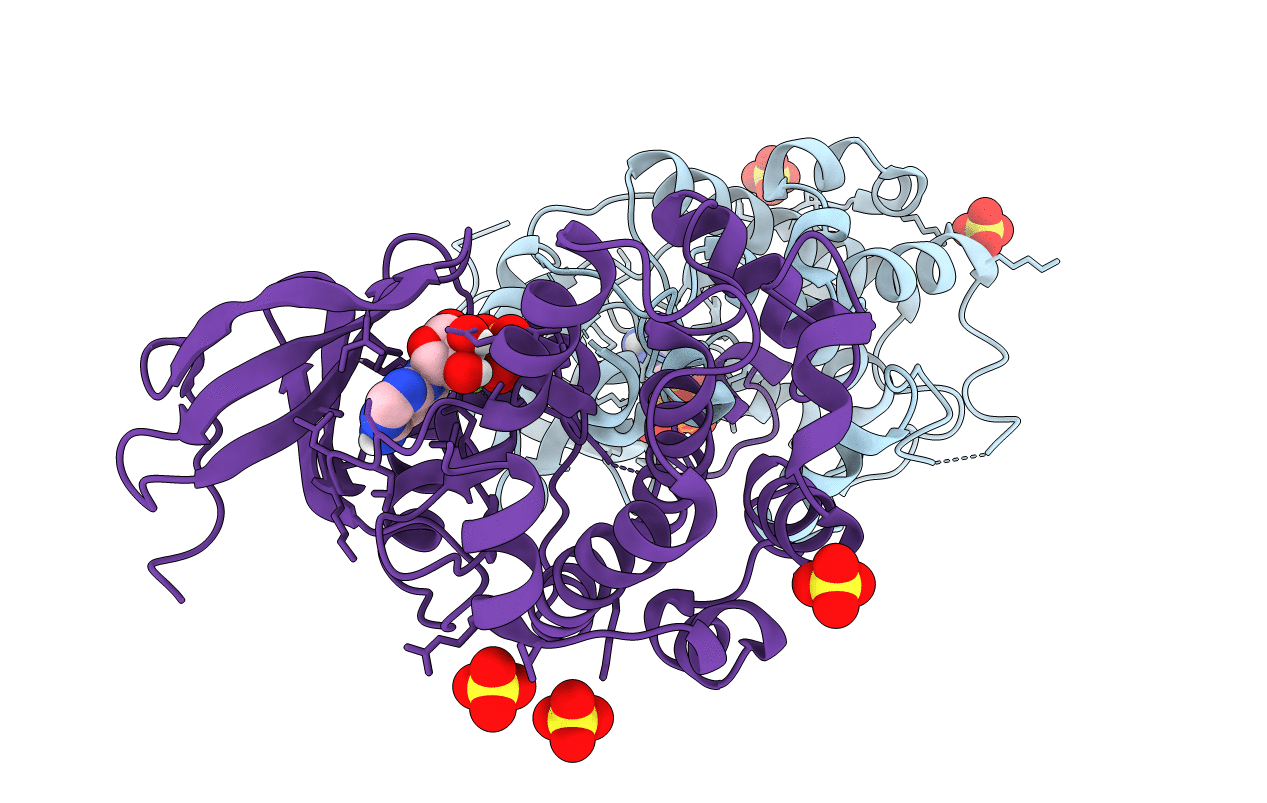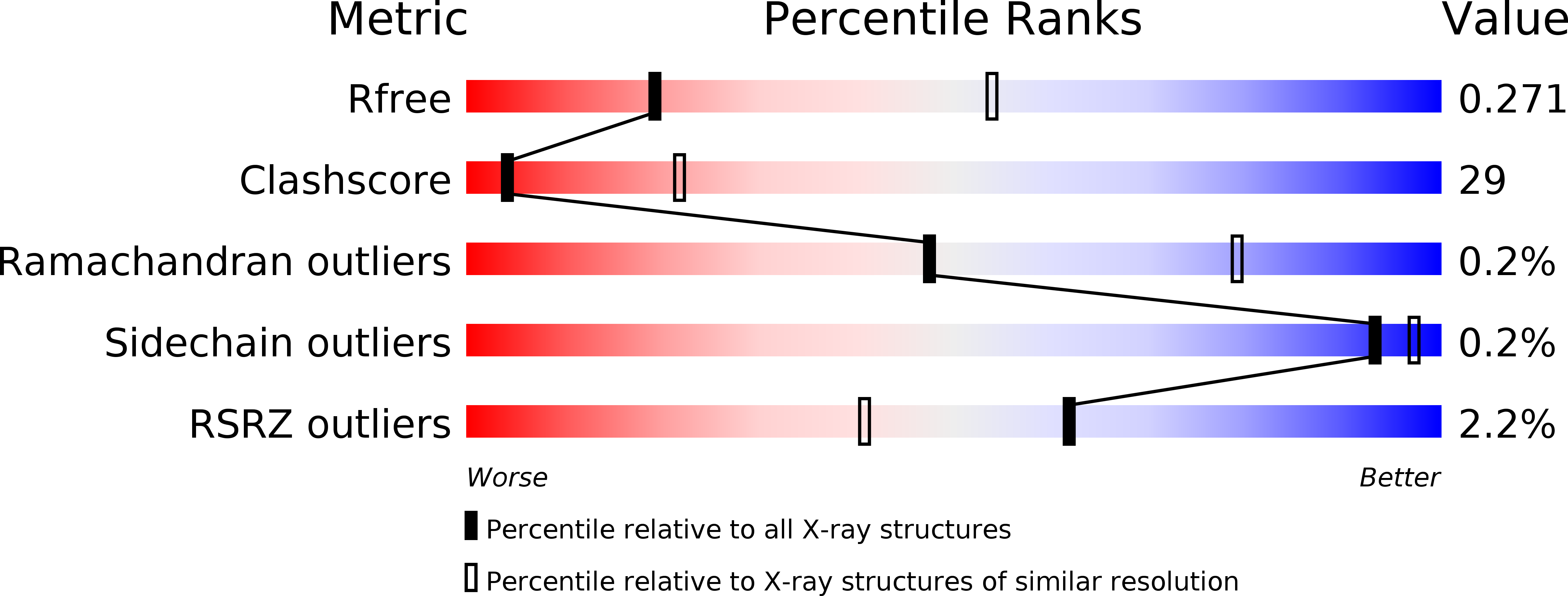
Deposition Date
2015-08-18
Release Date
2015-09-02
Last Version Date
2024-03-06
Entry Detail
PDB ID:
5D9H
Keywords:
Title:
Crystal structure of SPAK (STK39) dimer in the basal activity state
Biological Source:
Source Organism:
Mus musculus (Taxon ID: 10090)
Host Organism:
Method Details:
Experimental Method:
Resolution:
3.10 Å
R-Value Free:
0.26
R-Value Work:
0.23
R-Value Observed:
0.24
Space Group:
P 1 21 1


